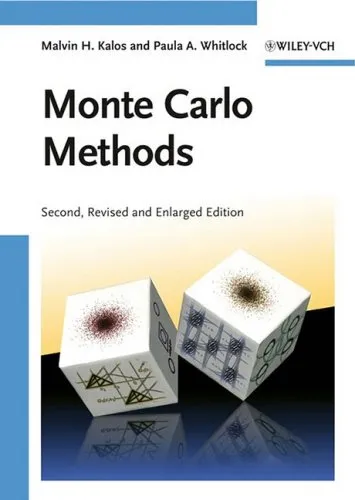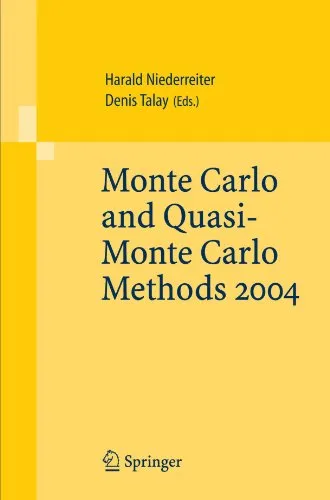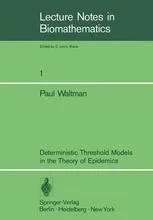Mathematical Modeling and Soft Computing in Epidemiology
4.5
Reviews from our users

You Can Ask your questions from this book's AI after Login
Each download or ask from book AI costs 2 points. To earn more free points, please visit the Points Guide Page and complete some valuable actions.Related Refrences:
Welcome to Mathematical Modeling and Soft Computing in Epidemiology
Epidemiology, as an interdisciplinary science, plays an essential role in understanding and managing the spread of diseases. Over the past decade, advancements in mathematical modeling techniques and the advent of soft computing tools have revolutionized how we interpret disease dynamics and predict outbreaks. This book, Mathematical Modeling and Soft Computing in Epidemiology, combines these fields, offering readers a comprehensive exploration of the synergy between mathematical models and computational methods in tackling real-world epidemiological issues. It serves as an essential resource for researchers, academicians, policymakers, and applied scientists who strive to better comprehend the mechanics of infectious disease dynamics and control.
Co-edited by Jyoti Mishra, Ritu Agarwal, and Abdon Atangana, the book brings together leading researchers and practitioners in epidemiology, mathematics, and computer science. It delves into theoretical modeling frameworks, real-world epidemiological applications, and innovative computational methodologies designed to predict and prevent the spread of diseases.
Detailed Summary of the Book
The book provides a structured approach to understanding the intersection of mathematic-based models and soft computing techniques in epidemiology. It begins with an introduction to the fundamental concepts of compartmental models such as SIR, SEIR, and related stochastic models, offering insights into their historical development and real-world applications. Recognizing the limitations and challenges of these classical methods, it highlights the growing necessity of incorporating artificial intelligence and soft computing into the field.
Subsequent chapters delve into cutting-edge computational techniques like fuzzy logic systems, neural networks, and evolutionary algorithms, demonstrating how these can complement traditional epidemiological models. Real-world case studies, ranging from historical disease outbreaks to recent epidemics (e.g., COVID-19), are discussed to illustrate the efficacy of hybrid approaches. The integration of optimization algorithms with epidemiological models is emphasized, particularly for solving resource allocation problems, vaccination strategies, and control intervention planning.
The book’s multidisciplinary approach ensures readers acquire not only theoretical knowledge but also hands-on applications, enabling practical insights into policymaking and healthcare management. With clean, concise explanations, the editors provide a balanced view of the successes and limitations of mathematical prediction in epidemiology.
Key Takeaways
1. Innovative Synergies: The book highlights the collaboration between traditional deterministic models and non-traditional approaches such as machine learning and soft computing.
2. Practical Applications: It bridges the gap between theoretical constructs and real-world applications by offering case studies and actionable insights for disease management.
3. Computational Techniques: Readers gain practical knowledge of fuzzy logic, genetic algorithms, neural networks, and their integration into mathematical modeling.
4. Policy-making Insights: The book provides essential tools for optimizing healthcare strategies and improving decision-making processes in large-scale outbreaks.
5. Soft Computing Revolution: This work demonstrates how soft computing is a game changer for epidemiology, introducing flexibility and robustness in prediction modeling and uncertainty analysis.
Famous Quotes from the Book
"Mathematical models are not mere abstractions but potent tools that can predict the trajectory of epidemics—if wielded wisely."
"Incorporating fuzzy systems and soft computing into epidemiology isn't just a luxury; it's a necessity in today's complex and uncertain world."
"Every epidemic is a puzzle. Solving it demands the combined wisdom of traditional mathematics and the disruptive innovation of modern computation."
Why This Book Matters
This book is a significant contribution to the evolving field of epidemiology. In an era of global interconnectedness, where the rapid spread of disease poses unparalleled challenges, the necessity for accurate predictions and informed policy decisions is more critical than ever.
By showcasing the synergy of mathematics and soft computing, this book helps bridge a crucial gap in understanding disease models under complex and uncertain conditions. It transcends academic boundaries by offering practical and actionable insights to researchers, governments, and international health organizations alike. The editors and contributing authors have succeeded in making the book a definitive text for anyone wishing to employ modern mathematical methods and computational tools in their epidemiological research.
Beyond its academic relevance, the book ensures that policymakers and healthcare professionals are equipped with the knowledge needed to implement impactful solutions for disease surveillance and containment. These efforts collectively contribute to advancing public health systems and safeguarding global communities from future pandemics and epidemics.
Free Direct Download
You Can Download this book after Login
Accessing books through legal platforms and public libraries not only supports the rights of authors and publishers but also contributes to the sustainability of reading culture. Before downloading, please take a moment to consider these options.
Find this book on other platforms:
WorldCat helps you find books in libraries worldwide.
See ratings, reviews, and discussions on Goodreads.
Find and buy rare or used books on AbeBooks.
1599
بازدید4.5
امتیاز0
نظر98%
رضایتReviews:
4.5
Based on 0 users review
Questions & Answers
Ask questions about this book or help others by answering
No questions yet. Be the first to ask!















